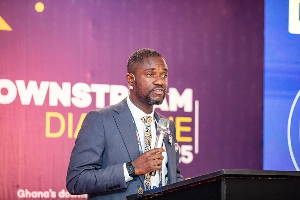Copyright ghanamma

Africa’s oil and gas downstream market, currently valued at USD 80.5 billion, is projected to reach USD 120.8 billion by 2032, positioning the continent as the world’s next frontier for downstream growth. Demand across Africa is expected to rise by 2.2 million barrels per day (MMB/D) between 2019 and 2035, representing a 2.3 percent annual growth rate. Speaking at the OTL 2025 Expo, Africa’s Downstream Energy Week in Lagos, on “Emerging Business Models within the Downstream Landscape,” the Chief Executive Officer of the Chamber of Oil Marketing Companies (COaMC), Dr Riverson Oppong, said the downstream sector is entering a transformative era driven by digitisation, diversification, and customer-centric innovation. “Digitisation is no longer optional,” he stressed. “It is the foundation for capturing value and improving efficiency in modern downstream operations.” Dr Oppong revealed that digitising downstream processes can reduce operating costs by 12 to 20 percent, enhance throughput by up to 12 percent, and cut unplanned shutdowns by as much as 25 percent. Ghana’s downstream operators are already adopting automatic tank gauging, bulk road vehicle tracking, and mobile payment platforms to enhance transparency and customer convenience. He explained that service stations are evolving into lifestyle destinations, offering convenience stores, digital wallets, and real-time fuel pricing. Globally, demand for convenience services is projected to nearly double by 2030, growing at more than 5 percent annually. New business concepts such as Energy-as-a-Service (EaaS) are reshaping how energy is consumed and delivered. Under this model, customers pay for energy outcomes instead of owning infrastructure, with third-party providers installing and operating solar systems, storage batteries, and other equipment. Dr Oppong also highlighted emerging trends like mini-refineries, LPG micro-distribution centres, pay-as-you-go delivery, and strategic joint ventures that enable smaller oil marketing companies to pool resources and compete effectively. He urged policymakers and industry players to strengthen regulatory frameworks, invest in digital infrastructure, and foster partnerships that promote innovation and sustainability. “The future belongs to companies that embrace technology, collaboration, and customer-driven energy solutions,” he said.



